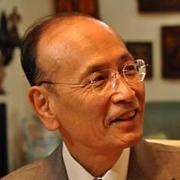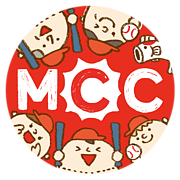ジョン・ウェインの死因は癌。ネバダ核実験場風下で『征服者』の撮影。この関係者多く癌で死亡。広瀬隆著『ジョン・ウェインはなぜ死んだか』。彼女は米国で芸術を通じ紹介。大反響。
2019-01-03 12:1010
ART : The Real Death Valley : Nobuho Nagasawa has created 'The Atomic Cowboy'--an exhibition that addresses the fatal consequences of using former atomic test sites as locations for '50s films
In 1954, millionaire entrepreneur and movie producer Howard Hughes embarked on what he envisioned as his cinematic masterpiece. A historical epic based on the life of 13th-Century warrior Genghis Khan, the film was to be called "The Conqueror" and would star American icon John Wayne as the ancient Asian terrorist--a peculiar bit of casting, yes, but Hughes was nothing if not a man of boundless imagination. After hiring actor Dick Powell to direct the picture, Hughes set off with cast and crew for the deserts of Nevada, where the $6-million folly was to be shot.
The disaster that befell the 220 people involved in the making of "The Conqueror" is the subject of "The Atomic Cowboy--The Daze After," an installation by Japanese artist Nobuho Nagasawa on view at the Daniel Saxon Gallery in Hollywood through Feb. 15. As Nagasawa tells it, the filming of "The Conqueror" went relatively well--nothing more occurred than the usual fits of temperament that make movie sets the peculiar playpens they are. No one was disturbed about working in an area of Nevada that had been the site of countless atomic tests.
During the halcyon days of the '50s, the atomic bomb dropped on Hiroshima was widely hailed as the miracle of science that ended World War II. Radiation? Plutonium poisoning? No problem. Just duck under a table and cover your eyes. In fact, everyone felt so secure about atomic energy then that RKO Pictures had six tons of plutonium-laced Utah earth shipped to a Culver City studio for use on a desert set--earth that was later distributed throughout Hollywood.
The gravity of this error in judgment may continue to make itself felt well into the future. What is known thus far is that 91 of the 220 crew members of "The Conqueror" contracted cancer, and the film's stars--John Wayne, Agnes Moorehead, Pedro Armendariz and Susan Hayward--along with director Dick Powell, all died of cancer-related illnesses. Possible victims of the film also include about 300 members of the Shivwit Indian tribe who were employed as extras. Hundreds of other movies--primarily Westerns--were also shot in the region.
The subject of a book published in 1982 by Japanese writer Takashi Hirose, titled "Why John Wayne Died," the scandal surrounding the movies shot in Nevada during the '50s seems to be common knowledge everywhere but in America.
"I found a Danish school textbook titled 'The Downwinders' that deals with this subject," Nagasawa said during an interview at the Saxon gallery, "and Hirose's book is well known in Japan, but when he tried to have it published here he was told it was too sensational. The Atomic Energy Commission refuses to acknowledge any of this, and the Hollywood community also seems to prefer to pretend it never happened.
"This story is included in a book called 'Hollywood Hall of Shame' that deals with various movie-related fiascoes, but basically it's been completely covered up. The stars of 'The Conqueror' were all heavy smokers and their deaths were widely attributed to smoking. However, the children of Dick Powell, John Wayne and Susan Hayward are convinced the atomic tests killed their parents, and in 1980 they gathered together at the site to commemorate their deaths." (This is the same region examined in the recently published book "Bravo 20," photographer Richard Misrach's frighteningly powerful visual essay on the grim aftermath of the tests).
Nagasawa's inquiry into the deadly legacy of the atomic tests is a sprawling mixed-media installation that winds through all three gallery viewing areas and onto an exterior garden space where she's erected a structure that's a hybrid of a greenhouse and a fallout shelter.
Featured in the piece are photographic portraits of 45 stars whose deaths could be linked to the atomic tests. Using information culled from a book titled "Who Was Who in Hollywood" that lists the cause of death of Hollywood figures, Nagasawa charted deaths dating from the '50s through the present (the first atomic test was conducted at Los Alamos, N.M., in 1945). Her piece also includes documentation of dates and locations where tests were conducted, and a refrigerator rigged with speakers playing cowboy music and filled with motorized red sand that shifts in explosive waves.
"I find this episode in history more horrifying than the tragedy at Hiroshima because these tests were shrouded in lies and the government was aware of the danger," says Nagasawa, whose family was not directly affected by the atomic bombings at Hiroshima or Nagasaki. "The term downwinder , coined in connection with the tests, refers to the fact that the blasts were only detonated when the wind blew east, away from the moneymaking cities of Las Vegas and California, and towards Utah and northern Arizona, which are primarily inhabited by Mormons and American Indians."
(出典:http://
2019-01-03 12:1010
ART : The Real Death Valley : Nobuho Nagasawa has created 'The Atomic Cowboy'--an exhibition that addresses the fatal consequences of using former atomic test sites as locations for '50s films
In 1954, millionaire entrepreneur and movie producer Howard Hughes embarked on what he envisioned as his cinematic masterpiece. A historical epic based on the life of 13th-Century warrior Genghis Khan, the film was to be called "The Conqueror" and would star American icon John Wayne as the ancient Asian terrorist--a peculiar bit of casting, yes, but Hughes was nothing if not a man of boundless imagination. After hiring actor Dick Powell to direct the picture, Hughes set off with cast and crew for the deserts of Nevada, where the $6-million folly was to be shot.
The disaster that befell the 220 people involved in the making of "The Conqueror" is the subject of "The Atomic Cowboy--The Daze After," an installation by Japanese artist Nobuho Nagasawa on view at the Daniel Saxon Gallery in Hollywood through Feb. 15. As Nagasawa tells it, the filming of "The Conqueror" went relatively well--nothing more occurred than the usual fits of temperament that make movie sets the peculiar playpens they are. No one was disturbed about working in an area of Nevada that had been the site of countless atomic tests.
During the halcyon days of the '50s, the atomic bomb dropped on Hiroshima was widely hailed as the miracle of science that ended World War II. Radiation? Plutonium poisoning? No problem. Just duck under a table and cover your eyes. In fact, everyone felt so secure about atomic energy then that RKO Pictures had six tons of plutonium-laced Utah earth shipped to a Culver City studio for use on a desert set--earth that was later distributed throughout Hollywood.
The gravity of this error in judgment may continue to make itself felt well into the future. What is known thus far is that 91 of the 220 crew members of "The Conqueror" contracted cancer, and the film's stars--John Wayne, Agnes Moorehead, Pedro Armendariz and Susan Hayward--along with director Dick Powell, all died of cancer-related illnesses. Possible victims of the film also include about 300 members of the Shivwit Indian tribe who were employed as extras. Hundreds of other movies--primarily Westerns--were also shot in the region.
The subject of a book published in 1982 by Japanese writer Takashi Hirose, titled "Why John Wayne Died," the scandal surrounding the movies shot in Nevada during the '50s seems to be common knowledge everywhere but in America.
"I found a Danish school textbook titled 'The Downwinders' that deals with this subject," Nagasawa said during an interview at the Saxon gallery, "and Hirose's book is well known in Japan, but when he tried to have it published here he was told it was too sensational. The Atomic Energy Commission refuses to acknowledge any of this, and the Hollywood community also seems to prefer to pretend it never happened.
"This story is included in a book called 'Hollywood Hall of Shame' that deals with various movie-related fiascoes, but basically it's been completely covered up. The stars of 'The Conqueror' were all heavy smokers and their deaths were widely attributed to smoking. However, the children of Dick Powell, John Wayne and Susan Hayward are convinced the atomic tests killed their parents, and in 1980 they gathered together at the site to commemorate their deaths." (This is the same region examined in the recently published book "Bravo 20," photographer Richard Misrach's frighteningly powerful visual essay on the grim aftermath of the tests).
Nagasawa's inquiry into the deadly legacy of the atomic tests is a sprawling mixed-media installation that winds through all three gallery viewing areas and onto an exterior garden space where she's erected a structure that's a hybrid of a greenhouse and a fallout shelter.
Featured in the piece are photographic portraits of 45 stars whose deaths could be linked to the atomic tests. Using information culled from a book titled "Who Was Who in Hollywood" that lists the cause of death of Hollywood figures, Nagasawa charted deaths dating from the '50s through the present (the first atomic test was conducted at Los Alamos, N.M., in 1945). Her piece also includes documentation of dates and locations where tests were conducted, and a refrigerator rigged with speakers playing cowboy music and filled with motorized red sand that shifts in explosive waves.
"I find this episode in history more horrifying than the tragedy at Hiroshima because these tests were shrouded in lies and the government was aware of the danger," says Nagasawa, whose family was not directly affected by the atomic bombings at Hiroshima or Nagasaki. "The term downwinder , coined in connection with the tests, refers to the fact that the blasts were only detonated when the wind blew east, away from the moneymaking cities of Las Vegas and California, and towards Utah and northern Arizona, which are primarily inhabited by Mormons and American Indians."
(出典:http://
|
|
|
|
|
|
|
|
孫崎亨・広原盛明・色平哲郎達見 更新情報
-
最新のイベント
-
まだ何もありません
-
-
最新のアンケート
























